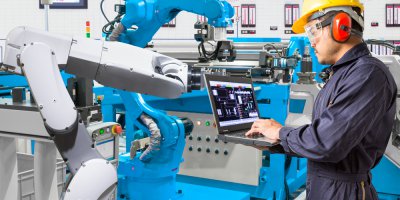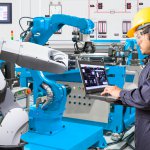
Public service departments and government offices in the APAC need to improve. Source: Shutterstock
Governments need to buy more tech — starting with RPA
TODAY, most businesses understand that they need to get more tech-savvy. However, the lack of technology to support digitization holds organizations back in many ways.
In the APAC, governments in some countries such as Singapore, Hong Kong, India, and Australia have been offering technology selectively — but in every instance, their adoption has fast-tracked adoption and digitization among SMEs and local businesses.
Take the revenue collection or taxation department for example.
In countries where the government has introduced application programming interface (API)-based access to their systems have helped businesses create digital tax reporting and payment solutions that not only make filing taxes easier but also make it easier (and more cost effective) for the government to collect taxes.
However, most experts recommend that the first technology that governments should explore is robotic process automation (RPA).
Touted as one of the easiest technologies that help companies climb the digital transformation ladder, RPA is usually quick to deploy and quite cost-effective.
According to a recent blogpost by McKinsey, many governments have already made significant progress in creating online processes for citizens to complete applications and communicate with providers of services.
For them, the think tank believes, the obvious next step is to use automation at scale to bring internal operations and processes up to date, so that they can become digital organizations at their core.
McKinsey highlights the fact that automation offers accuracy, consistency, scalability, and traceability — all of which are of key importance in the public works department and the government sector.
“The impact in government is likely to be an improved service offering, more transparency, and more consistent data and analysis for tasks such as crime prevention. Automation can also boost employee satisfaction—repetitive manual work is frequently cited as one of the main sources of public-sector job dissatisfaction,” said the blogpost.
According to McKinsey’s consultants, there are six technologies that are most likely to be useful in driving the change process — of which, automation, of course, is the first.
A key stat that the blogpost offers is this: In finance, HR, and procurement, some 60 to 80 percent of tasks are automatable, creating the potential for net long-term savings (after accounting for implementation and ongoing software costs) of at least 30 percent.
That stat alone should be enough to motivate governments across the world, and especially in the APAC, to get on with automation. However, there’s more incentive for governments to factor in before they can decide to side with RPA.
Deloitte, for example, who boasts of its work with the police forces in England and Wales, points out that process automation was the first step to digitizing teams — helping transform the units into what they are today.
Although case studies in this field are not extensively available in the public domain because the sheer size of such projects require months to be implemented without interrupting business-as-usual, there are plenty of examples of public sector organizations and government departments exploring RPA.
However, in order for there to be a real impact, governments need to ramp up their investments in technologies such as RPA and go all out on leveraging technologies to radically improve life for citizens and accelerate the digital journey for SMEs and local businesses.
READ MORE
- The criticality of endpoint management in cybersecurity and operations
- Ethical AI: The renewed importance of safeguarding data and customer privacy in Generative AI applications
- How Japan balances AI-driven opportunities with cybersecurity needs
- Deploying SASE: Benchmarking your approach
- Insurance everywhere all at once: the digital transformation of the APAC insurance industry






